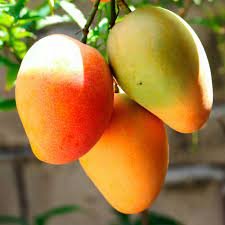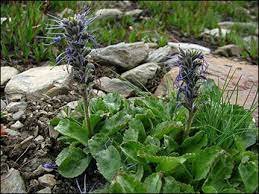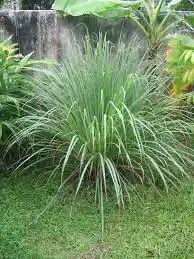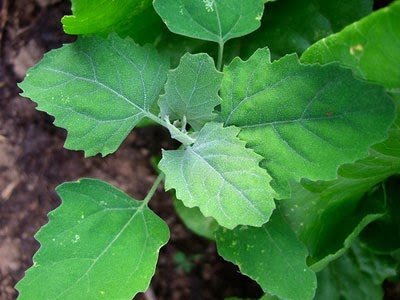Cardamom (Elettaria cardamomum) Nutrition Requirements
Nutrition required by
at each stage of its life cycle.
SOIL PREPARATION
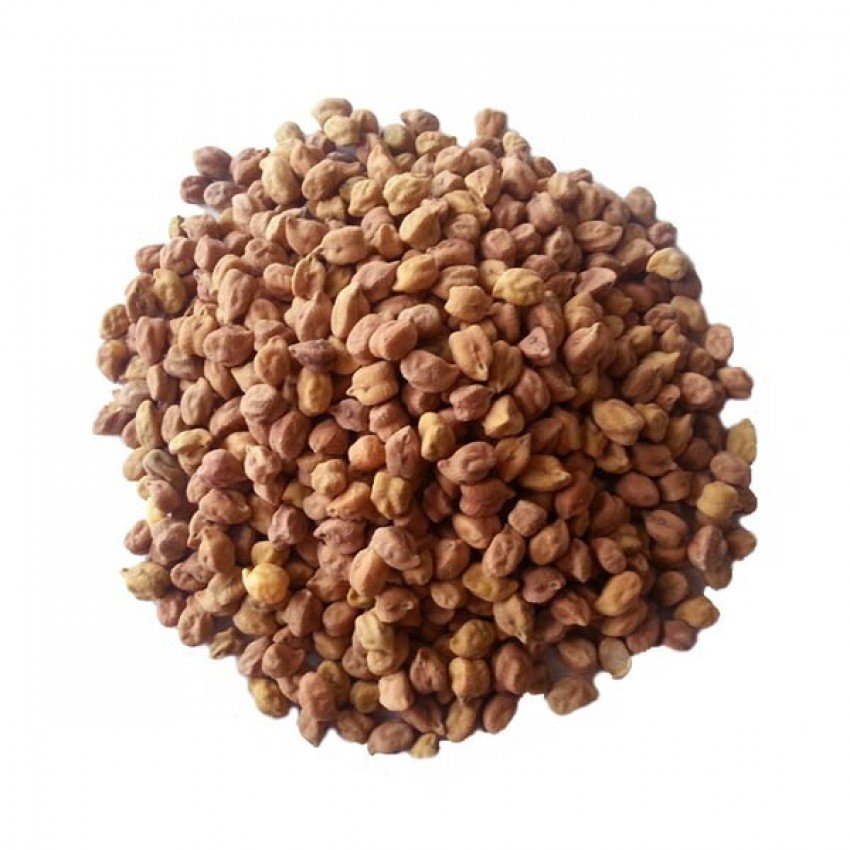
Soil Preparation
Soil preparation is a crucial step in cardamom cultivation as it lays the foundation for healthy plant growth and optimal yields.
Here's a method for soil preparation and the nutrition requirements at the soil preparation stage for cardamom (Elettaria cardamomum):
**Soil Preparation Method:**
1. **Site Selection:**
Choose a site with well-drained soil that receives partial shade or filtered sunlight. Cardamom thrives in rich, loamy soil with good organic matter content.
2. **Clearing and Cleaning:**
Clear the selected site of any debris, weeds, and unwanted vegetation. This may involve manual clearing or mechanical methods like brush cutting.
3. **Soil Testing:**
Conduct soil tests to determine the pH level and nutrient content of the soil. Cardamom prefers slightly acidic soil with a pH range of 6.0 to 6.8. Soil testing helps identify any deficiencies that need to be addressed through fertilization.
4. **Tillage:**
Till the soil to a depth of about 30 to 45 cm (12 to 18 inches) using a plow or tiller. This helps loosen the soil, improve aeration, and facilitate root growth.
5. **Incorporation of Organic Matter:**
Incorporate organic matter such as well-rotted compost or farmyard manure into the soil during tilling. Organic matter improves soil structure, enhances water retention, and provides essential nutrients to the plants.
6. **Leveling:**
Level the soil surface to ensure uniform planting and water distribution. Smooth and level soil facilitates efficient cultivation practices and irrigation management.
7. **Mulching:**
Apply a layer of organic mulch such as dried leaves or straw to the soil surface. Mulching helps conserve soil moisture, suppress weed growth, and regulate soil temperature.
**Nutrition Requirement at Soil Preparation Stage:**
During the soil preparation stage for cardamom cultivation, it's essential to ensure that the soil has adequate levels of essential nutrients to support plant growth and development. Here are the key nutrient requirements:
1. **Organic Matter:**
Incorporating organic matter into the soil during preparation provides a source of essential nutrients and improves soil fertility. Well-rotted compost or farmyard manure is commonly used for this purpose.
2. **Major Nutrients:**
Nitrogen (N), phosphorus (P), and potassium (K) are the primary macronutrients required for healthy cardamom growth. Soil testing helps determine the nutrient levels and any deficiencies that need to be addressed through fertilization.
3. **Micronutrients:**
Cardamom plants also require micronutrients such as magnesium (Mg), calcium (Ca), sulfur (S), iron (Fe), manganese (Mn), zinc (Zn), copper (Cu), and boron (B) for various physiological functions. Soil testing can identify micronutrient deficiencies, and appropriate micronutrient amendments can be applied accordingly.
4. **pH Adjustment:**
If the soil pH is outside the optimal range for cardamom cultivation (6.0 to 6.8), amendments such as lime or sulfur may be required to adjust the pH level and create a suitable growing environment for the plants.
By following these soil preparation methods and addressing the nutrition requirements at the soil preparation stage, growers can create an optimal growing environment for cardamom plants, promoting healthy growth and maximizing yields. Regular soil testing and monitoring are essential for maintaining soil fertility and addressing any nutrient deficiencies as the crop grows.
Early Growth (Germination to Establishment)

Early Growth
During the early growth stage of cardamom plants (from germination to establishment of seedlings), it's essential to provide adequate nutrition to support healthy growth and development.
Here are the key nutrient requirements for cardamom plants during this stage:
1. **Nitrogen (N):**
Nitrogen is essential for promoting vegetative growth and overall plant vigor during the early growth stage. It plays a crucial role in leaf development, stem elongation, and root establishment.
- Application:
Apply nitrogen-containing fertilizers such as urea or ammonium sulfate at a rate recommended based on soil test results and specific crop requirements.
2. **Phosphorus (P):**
Phosphorus is important for promoting root development, energy transfer, and early growth processes in cardamom plants.
- Application:
Apply phosphorus-containing fertilizers such as single superphosphate or diammonium phosphate at a rate recommended based on soil test results and specific crop requirements.
3. **Potassium (K):**
Potassium is essential for enhancing plant vigor, improving stress tolerance, and supporting overall plant health during the early growth stage.
- Application:
Apply potassium-containing fertilizers such as muriate of potash or potassium sulfate at a rate recommended based on soil test results and specific crop requirements.
4. **Calcium (Ca) and Magnesium (Mg):**
Calcium and magnesium are secondary nutrients that play important roles in cell wall formation, enzyme activation, and nutrient uptake in cardamom plants.
- Application:
Apply calcium and magnesium-containing fertilizers such as dolomite lime or gypsum at a rate recommended based on soil test results and specific crop requirements.
5. **Micronutrients:**
Micronutrients such as iron (Fe), manganese (Mn), zinc (Zn), copper (Cu), boron (B), and molybdenum (Mo) are essential for various physiological functions and enzyme activities during the early growth stage.
- Application:
Apply micronutrient-containing fertilizers or foliar sprays as needed based on soil test results and specific crop requirements. Foliar application of micronutrients can provide quick uptake by plants.
6. **Sulfur (S):**
Sulfur is important for protein synthesis, enzyme activation, and overall plant metabolism during the early growth stage.
- Application:
Apply sulfur-containing fertilizers such as elemental sulfur or sulfate of potash-magnesia at a rate recommended based on soil test results and specific crop requirements.
It's important to conduct soil tests to assess nutrient levels and pH before applying fertilizers to cardamom plants during the early growth stage. This helps determine any nutrient deficiencies and ensures proper fertilization to support healthy plant growth and establishment. Additionally, maintaining proper soil moisture and providing adequate sunlight are also essential factors for successful early growth of cardamom plants.
Tillering Stage (Shoot Development)

Tillering Stage
During the tillering stage of cardamom plants, which involves shoot development and the formation of lateral branches, providing adequate nutrition is essential for promoting healthy growth and development.
Here are the key nutrient requirements for cardamom plants during the tillering stage:
1. **Nitrogen (N):**
Nitrogen is crucial for promoting vigorous shoot growth and the development of healthy foliage during the tillering stage of cardamom plants.
- Application:
Apply nitrogen-containing fertilizers such as urea or ammonium sulfate at a rate recommended based on soil test results and specific crop requirements. Split applications may be beneficial to ensure continuous nitrogen availability.
2. **Phosphorus (P):**
Phosphorus is important for supporting root development, energy transfer, and overall plant growth during the tillering stage.
- Application:
Apply phosphorus-containing fertilizers such as single superphosphate or diammonium phosphate at a rate recommended based on soil test results and specific crop requirements.
3. **Potassium (K):**
Potassium is essential for promoting strong stem development, improving stress tolerance, and enhancing overall plant health during the tillering stage.
- Application:
Apply potassium-containing fertilizers such as muriate of potash or potassium sulfate at a rate recommended based on soil test results and specific crop requirements.
4. **Calcium (Ca) and Magnesium (Mg):**
Calcium and magnesium are secondary nutrients that play important roles in cell wall formation, enzyme activation, and nutrient uptake during the tillering stage.
- Application:
Apply calcium and magnesium-containing fertilizers such as dolomite lime or gypsum at a rate recommended based on soil test results and specific crop requirements.
5. **Micronutrients:**
Micronutrients such as iron (Fe), manganese (Mn), zinc (Zn), copper (Cu), boron (B), and molybdenum (Mo) are essential for various physiological functions and enzyme activities during the tillering stage.
- Application:
Apply micronutrient-containing fertilizers or foliar sprays as needed based on soil test results and specific crop requirements. Foliar application of micronutrients can provide quick uptake by plants.
6. **Sulfur (S):**
Sulfur is important for protein synthesis, enzyme activation, and overall plant metabolism during the tillering stage.
- Application:
Apply sulfur-containing fertilizers such as elemental sulfur or sulfate of potash-magnesia at a rate recommended based on soil test results and specific crop requirements.
It's important to conduct soil tests to assess nutrient levels and pH before applying fertilizers to cardamom plants during the tillering stage. This helps determine any nutrient deficiencies and ensures proper fertilization to support healthy shoot development and establishment of lateral branches. Additionally, maintaining proper soil moisture and providing adequate sunlight are also essential factors for successful tillering of cardamom plants.
Flowering

Flowering
During the flowering stage of cardamom plants, providing appropriate nutrition is crucial to support flower development, pollination, and subsequent fruit set.
Here are the key nutrient requirements for cardamom plants during the flowering stage:
1. **Potassium (K):**
Potassium is essential for promoting flower development, improving flower quality, and enhancing overall plant health during the flowering stage.
- Application:
Apply potassium-containing fertilizers such as muriate of potash or potassium sulfate at a rate recommended based on soil test results and specific crop requirements. Potassium helps in flower initiation and development.
2. **Phosphorus (P):**
Phosphorus plays a vital role in flower formation and reproductive processes in plants.
- Application:
Apply phosphorus-containing fertilizers such as single superphosphate or diammonium phosphate at a rate recommended based on soil test results and specific crop requirements.
3. **Calcium (Ca) and Magnesium (Mg):**
Calcium and magnesium are important for proper flower development and pollination in cardamom plants.
- Application:
Apply calcium and magnesium-containing fertilizers such as dolomite lime or gypsum at a rate recommended based on soil test results and specific crop requirements.
4. **Nitrogen (N):**
While nitrogen is essential for overall plant growth, excessive nitrogen during the flowering stage can lead to vegetative growth at the expense of flower formation. Therefore, nitrogen application should be moderate during this stage.
- Application:
Apply nitrogen-containing fertilizers such as urea or ammonium sulfate at a reduced rate based on soil test results and specific crop requirements.
5. **Micronutrients:**
Micronutrients such as boron (B), zinc (Zn), and manganese (Mn) are important for flower development, pollination, and fruit set in cardamom plants.
- Application:
Apply micronutrient-containing fertilizers or foliar sprays containing boron, zinc, and manganese as needed based on soil test results and specific crop requirements. Ensure proper micronutrient availability for optimal flower development and pollination.
6. **Sulfur (S):**
Sulfur is important for protein synthesis and enzyme activation during the flowering stage.
- Application:
Apply sulfur-containing fertilizers such as elemental sulfur or sulfate of potash-magnesia at a rate recommended based on soil test results and specific crop requirements.
It's essential to maintain a balanced nutrient supply during the flowering stage of cardamom plants to ensure proper flower development, pollination, and subsequent fruit set. Regular monitoring of plant health and nutrient levels, combined with appropriate fertilization practices, is crucial for optimizing flowering and fruiting in cardamom cultivation.
Matchuration & Ripening

Matchuration & Ripening
During the maturation and ripening stage of cardamom, also known as the pod development stage, providing appropriate nutrition is essential to support the development of flavorful and high-quality cardamom pods.
Here are the key nutrient requirements for cardamom plants during the maturation and ripening stage:
1. **Potassium (K):**
Potassium is essential for promoting pod development, improving pod quality, and enhancing overall plant health during the maturation and ripening stage.
- Application:
Apply potassium-containing fertilizers such as muriate of potash or potassium sulfate at a rate recommended based on soil test results and specific crop requirements. Potassium helps in pod filling and ripening.
2. **Phosphorus (P):**
Phosphorus plays a vital role in pod development, seed formation, and overall plant metabolism during the maturation and ripening stage.
- Application:
Apply phosphorus-containing fertilizers such as single superphosphate or diammonium phosphate at a rate recommended based on soil test results and specific crop requirements.
3. **Calcium (Ca) and Magnesium (Mg):**
Calcium and magnesium are important for proper pod development, seed formation, and overall plant health during the maturation and ripening stage.
- Application:
Apply calcium and magnesium-containing fertilizers such as dolomite lime or gypsum at a rate recommended based on soil test results and specific crop requirements.
4. **Nitrogen (N):**
While nitrogen is essential for overall plant growth, excessive nitrogen during the maturation and ripening stage can lead to delayed maturation and reduced pod quality. Therefore, nitrogen application should be moderate during this stage.
- Application:
Apply nitrogen-containing fertilizers such as urea or ammonium sulfate at a reduced rate based on soil test results and specific crop requirements.
5. **Micronutrients:**
Micronutrients such as boron (B), zinc (Zn), and manganese (Mn) are important for pod development, seed formation, and overall plant health during the maturation and ripening stage.
- Application:
Apply micronutrient-containing fertilizers or foliar sprays containing boron, zinc, and manganese as needed based on soil test results and specific crop requirements. Ensure proper micronutrient availability for optimal pod development and ripening.
6. **Sulfur (S):**
Sulfur is important for pod development, flavor formation, and overall plant metabolism during the maturation and ripening stage.
- Application:
Apply sulfur-containing fertilizers such as elemental sulfur or sulfate of potash-magnesia at a rate recommended based on soil test results and specific crop requirements.
It's essential to maintain a balanced nutrient supply during the maturation and ripening stage of cardamom to ensure proper pod development, flavor formation, and overall crop quality. Regular monitoring of plant health and nutrient levels, combined with appropriate fertilization practices, is crucial for optimizing pod development and ripening in cardamom cultivation.
Harvesting

Harvesting
At the harvesting stage, proper nutrition management is crucial for cardamom plants to ensure healthy growth and optimal yield.
Here's a general overview of the nutrition requirements and procedures for cardamom at the harvesting stage:
Nutrition Requirements:
1. Macronutrients:
- Nitrogen (N):
Essential for leaf and stem growth.
- Phosphorus (P):
Promotes root development and flower formation.
- Potassium (K):
Aids in overall plant health and fruit development.
2. Micronutrients:
- Magnesium (Mg):
Essential for photosynthesis and enzyme activation.
- Calcium (Ca):
Supports cell wall structure and overall plant integrity.
- Sulfur (S):
Important for protein synthesis and overall plant growth.
- Boron (B):
Required for flower and fruit development.
- Zinc (Zn), Iron (Fe), Copper (Cu), Manganese (Mn): Necessary for various enzyme activities and metabolic processes.
Procedure:
1. Soil Testing:
- Conduct a soil test to determine the nutrient levels and pH of the soil.
- Adjust the pH to the optimal range for cardamom cultivation, which is typically between 5.5 and 6.5.
2. Fertilization:
- Based on the soil test results, apply fertilizers containing the required nutrients in appropriate proportions.
- Use organic fertilizers such as compost, manure, or organic formulations to promote soil health and microbial activity.
3. Application Timing:
- Split the fertilizer application into multiple doses throughout the growing season.
- Apply the first dose of fertilizers before the onset of the growing season to ensure adequate nutrient availability during the critical growth stages.
4. Foliar Sprays:
- Supplement soil fertilization with foliar sprays containing micronutrients, especially during periods of rapid growth and flowering.
- Foliar application helps in the quick absorption of nutrients by the plants and can address any deficiencies more effectively.
5. Irrigation Management:
- Ensure proper irrigation to maintain soil moisture levels, as inadequate water supply can hinder nutrient uptake and affect plant growth.
- Avoid waterlogging, as it can lead to root rot and nutrient leaching.
6. Mulching:
- Apply organic mulch around the base of the plants to conserve soil moisture, suppress weed growth, and enhance nutrient retention in the soil.
7. Monitoring and Adjustments:
- Regularly monitor the plant's growth, foliage color, and overall health to detect any signs of nutrient deficiencies or imbalances.
- Adjust the fertilizer application rates and timing as needed based on visual observations and plant responses.
8. Integrated Nutrient Management:
- Incorporate integrated nutrient management practices by combining organic and inorganic fertilizers along with other cultural practices to maintain soil fertility and sustainability.
By following these nutrition requirements and procedures, cardamom growers can optimize the nutrient management practices at the harvesting stage, leading to healthier plants and higher yields.
Cardamom (Elettaria cardamomum) Farming Economics
Get details of Profitability and cost estimate in growing
per acres of Land.
SOIL PREPARATION

Soil Preparation
Early Growth (Germination to Establishment)

Early Growth
Tillering Stage (Shoot Development)

Tillering Stage
Flowering

Flowering
Matchuration & Ripening

Matchuration & Ripening
Harvesting

Harvesting
Cardamom (Elettaria cardamomum) Disease Details
Nutrition required by
at each stage of its life cycle.
SOIL PREPARATION

Soil Preparation
During the soil preparation stage for cardamom cultivation, several diseases and pests can affect the soil and potentially impact plant health.
Here are some common issues, along with precautions to prevent them:
1. **Soil-borne Diseases:**
Soil-borne pathogens such as Phytophthora spp., Fusarium spp., and Rhizoctonia spp. can infect the soil and cause diseases such as root rot and damping-off in cardamom plants.
- Precautions:
- Ensure proper drainage to prevent waterlogging, as excess moisture can promote the development of soil-borne diseases.
- Use disease-free planting material and avoid introducing contaminated soil to the planting site.
- Rotate crops to reduce the buildup of soil-borne pathogens.
- Treat the soil with biocontrol agents or fungicides as preventive measures, following recommended guidelines.
2. **Weeds:**
Weeds competing with cardamom plants for nutrients, water, and sunlight can hinder plant growth and yield.
- Precautions:
- Clear the planting site of weeds before soil preparation.
- Implement weed control measures such as manual weeding, mulching, or herbicide application as needed.
- Maintain weed-free conditions throughout the growing season to reduce competition with cardamom plants.
3. **Nematodes:**
Nematodes are microscopic soil-dwelling pests that can feed on plant roots, leading to stunted growth and reduced yield.
- Precautions:
- Conduct soil tests to assess nematode populations and species present in the soil.
- Use nematode-resistant cardamom varieties if available.
- Implement soil solarization or fumigation with nematicides before planting to reduce nematode populations.
- Rotate crops with non-host plants to suppress nematode populations.
4. **Soil Pests:**
Soil-dwelling pests such as cutworms, wireworms, and white grubs can damage cardamom plant roots and tubers.
- Precautions:
- Use physical barriers such as collars around seedlings to protect them from soil pests.
- Apply biological control agents or soil-applied insecticides as preventive measures, following recommended guidelines.
- Rotate crops with pest-resistant or non-host plants to disrupt pest life cycles.
5. **Soil pH Imbalance:**
Soil pH imbalance can affect nutrient availability and uptake by cardamom plants, leading to nutrient deficiencies or toxicities.
- Precautions:
- Conduct soil tests to determine the pH level of the soil.
- Amend the soil pH as needed using agricultural lime to raise pH or elemental sulfur to lower pH, based on soil test results and specific crop requirements.
- Maintain the optimal pH range for cardamom cultivation (pH 5.5 to 7.0) to ensure proper nutrient availability.
By implementing these precautions and best practices during the soil preparation stage for cardamom cultivation, growers can minimize the risk of diseases and pests, promote healthy plant growth, and optimize yield and quality. Regular monitoring of soil health and pest populations is essential for early detection and timely intervention to protect cardamom plants throughout the growing season.
Early Growth (Germination to Establishment)

Early Growing
During the early growth stage of cardamom cultivation, several diseases and pests can affect young seedlings and potentially hinder their establishment and growth.
Here are some common issues, along with precautions to prevent them:
1. **Damping-off:**
Damping-off is a fungal disease caused by various pathogens such as Pythium spp., Rhizoctonia spp., and Fusarium spp. It affects seedlings during germination and early growth stages, causing rotting of stems and roots.
- Precautions:
- Use disease-free planting material.
- Ensure proper drainage to prevent waterlogging, as excess moisture promotes fungal growth.
- Provide good air circulation by spacing plants adequately.
- Apply fungicide-treated seeds or soil drenches with fungicides containing active ingredients effective against damping-off pathogens.
2. **Leaf Spot Diseases:**
Various fungal pathogens can cause leaf spot diseases in cardamom plants during the early growth stage, leading to lesions on leaves and reduced photosynthetic activity.
- Precautions:
- Practice crop rotation to reduce disease pressure.
- Maintain proper plant spacing to improve air circulation and reduce humidity levels.
- Apply fungicides preventively, especially during periods of high humidity and rainfall.
3. **Insect Pests:**
Insect pests such as aphids, thrips, and mites can feed on young cardamom seedlings, causing damage to leaves and shoots.
- Precautions:
- Monitor plants regularly for signs of insect infestation.
- Use insecticidal soaps or neem oil as organic controls for minor infestations.
- Apply insecticides as needed, following recommended guidelines and safety precautions.
4. **Nematodes:**
Nematodes are microscopic soil-dwelling pests that can feed on plant roots, leading to stunted growth and poor establishment of cardamom seedlings.
- Precautions:
- Conduct soil tests to assess nematode populations and species present in the soil.
- Use nematode-resistant cardamom varieties if available.
- Implement soil solarization or fumigation with nematicides before planting to reduce nematode populations.
- Rotate crops with non-host plants to suppress nematode populations.
5. **Weed Competition:**
Weeds competing with cardamom seedlings for nutrients, water, and sunlight can hinder their growth and establishment.
- Precautions:
- Clear the planting area of weeds before planting cardamom seedlings.
- Implement weed control measures such as manual weeding, mulching, or herbicide application as needed.
- Maintain weed-free conditions around young cardamom plants to reduce competition.
By implementing these precautions and best practices during the early growth stage of cardamom cultivation, growers can minimize the risk of diseases and pests, promote healthy establishment of seedlings, and optimize crop growth and development. Regular monitoring of plants for signs of disease and pest infestation is essential for early detection and timely intervention to protect young cardamom plants.
Tillering Stage (Shoot Development)

Tillering Stage
During the tillering stage (shoot development) of cardamom plants, several diseases and pests can affect the growth and development of shoots, potentially leading to yield losses.
Here are some common issues, along with precautions to prevent them:
1. **Leaf Spot Diseases:**
Various fungal pathogens can cause leaf spot diseases in cardamom plants during the tillering stage, leading to lesions on leaves and reduced photosynthetic activity.
- **Precautions:**
- Practice crop rotation to reduce disease pressure.
- Maintain proper plant spacing to improve air circulation and reduce humidity levels.
- Apply fungicides preventively, especially during periods of high humidity and rainfall.
- Remove and destroy infected plant debris to prevent the spread of pathogens.
2. **Bacterial Blight:**
Bacterial blight, caused by Xanthomonas campestris pv. malvacearum, can affect cardamom plants during the tillering stage, causing water-soaked lesions on leaves, stems, and shoots.
- **Precautions:**
- Use disease-free planting material.
- Avoid overhead irrigation to reduce leaf wetness and minimize the spread of bacteria.
- Apply copper-based fungicides or bactericides as preventive measures, following recommended guidelines.
- Practice crop rotation and maintain good sanitation practices to minimize disease buildup.
3. **Shoot Borer Insects:**
Shoot borers such as stem borers and shoot-tip borers can tunnel into the shoots of cardamom plants during the tillering stage, causing damage and reducing plant vigor.
- **Precautions:**
- Monitor plants regularly for signs of shoot borer infestation, such as wilting or tunneling in shoots.
- Prune and remove affected shoots to control the spread of infestation.
- Apply insecticides as needed, following recommended guidelines and safety precautions.
- Use pheromone traps to monitor and trap adult shoot borer insects.
4. **Root Rot:**
Root rot, caused by soil-borne pathogens such as Phytophthora spp. and Rhizoctonia spp., can affect the root system of cardamom plants during the tillering stage, leading to wilting, stunting, and reduced plant vigor.
- **Precautions:**
- Ensure proper drainage to prevent waterlogging, as excess moisture promotes fungal growth.
- Use disease-free planting material.
- Apply fungicides or biocontrol agents to the soil as preventive measures, following recommended guidelines.
- Avoid overwatering and irrigate cardamom plants based on their water needs.
5. **Nematodes:**
Nematodes are microscopic soil-dwelling pests that can feed on plant roots, leading to stunted growth and poor tillering in cardamom plants.
- **Precautions:**
- Conduct soil tests to assess nematode populations and species present in the soil.
- Use nematode-resistant cardamom varieties if available.
- Implement soil solarization or fumigation with nematicides before planting to reduce nematode populations.
- Rotate crops with non-host plants to suppress nematode populations.
By implementing these precautions and best practices during the tillering stage of cardamom cultivation, growers can minimize the risk of diseases and pests, promote healthy shoot development, and optimize crop growth and development. Regular monitoring of plants for signs of disease and pest infestation is essential for early detection and timely intervention to protect cardamom plants.
Flowering

Flowering
During the flowering stage of cardamom cultivation, several diseases and pests can affect the flowers and potentially impact fruit set and yield.
Here are some common issues, along with precautions to prevent them:
1. **Flower Blight:**
Flower blight is a fungal disease caused by pathogens such as Colletotrichum gloeosporioides and Fusarium spp. It affects cardamom flowers, causing discoloration, wilting, and premature dropping of flowers.
- **Precautions:**
- Maintain proper plant spacing to improve air circulation and reduce humidity levels.
- Apply fungicides preventively, especially during periods of high humidity and rainfall.
- Remove and destroy infected flowers and plant debris to prevent the spread of pathogens.
- Avoid overhead irrigation to minimize leaf wetness and fungal spore dissemination.
2. **Powdery Mildew:**
Powdery mildew is another fungal disease caused by pathogens such as Oidium spp. It leads to a white powdery growth on leaves and flowers, affecting their health and functionality.
- **Precautions:**
- Maintain proper plant spacing to improve air circulation and reduce humidity levels.
- Apply fungicides preventively, especially during periods of high humidity and rainfall.
- Remove and destroy infected plant debris to prevent the spread of pathogens.
- Avoid overhead irrigation to minimize leaf wetness and fungal spore dissemination.
3. **Thrips and Mites:**
Thrips and mites are common pests that feed on cardamom flowers, causing damage and reducing fruit set.
- **Precautions:**
- Monitor plants regularly for signs of thrips and mite infestation, such as feeding damage and distorted flowers.
- Use insecticidal soaps or neem oil as organic controls for minor infestations.
- Apply insecticides as needed, following recommended guidelines and safety precautions.
- Use pheromone traps to monitor and trap adult thrips.
4. **Pollination Management:**
Poor pollination can result in reduced fruit set and yield in cardamom plants.
- **Precautions:**
- Encourage natural pollinators such as bees and butterflies by providing suitable habitat and flowering plants.
- Consider manual pollination if natural pollinators are insufficient.
- Avoid using pesticides that are harmful to pollinators during the flowering stage.
5. **Environmental Stress:**
Extreme temperatures, drought, and excessive rainfall can affect flower development and fruit set in cardamom plants.
- **Precautions:**
- Provide adequate irrigation to maintain soil moisture levels during dry periods.
- Implement shade or shelter to protect cardamom plants from extreme temperatures and excessive rainfall.
- Maintain proper soil fertility and pH levels to support healthy plant growth and flower development.
By implementing these precautions and best practices during the flowering stage of cardamom cultivation, growers can minimize the risk of diseases and pests, promote healthy flower development, and optimize fruit set and yield. Regular monitoring of plants for signs of disease and pest infestation is essential for early detection and timely intervention to protect cardamom plants.
Matchuration & Ripening

Matchuration & Ripening
During the maturation and ripening stage of cardamom cultivation, several diseases and pests can affect the plants and pods, potentially impacting the quality and yield of the crop.
Here are some common issues, along with precautions to prevent them:
1. **Pod Rot:**
Pod rot is a fungal disease caused by pathogens such as Fusarium spp., Colletotrichum spp., and Alternaria spp. It affects mature cardamom pods, causing rotting, discoloration, and decay.
- **Precautions:**
- Maintain proper plant spacing to improve air circulation and reduce humidity levels around the pods.
- Harvest mature pods promptly to prevent overripening and susceptibility to fungal infections.
- Remove and destroy infected pods to prevent the spread of pathogens.
- Apply fungicides preventively, especially during periods of high humidity and rainfall.
2. **Seed Borer Insects:**
Seed borer insects such as cardamom shoot and fruit borer (Conogethes punctiferalis) can tunnel into mature cardamom pods, causing damage to seeds and reducing pod quality.
- **Precautions:**
- Monitor plants regularly for signs of seed borer infestation, such as exit holes and frass.
- Use pheromone traps to monitor and trap adult seed borer insects.
- Apply insecticides as needed, following recommended guidelines and safety precautions.
- Harvest mature pods promptly to minimize seed borer damage.
3. **Weather-related Damage:** Adverse weather conditions such as heavy rainfall, high humidity, and prolonged periods of moisture can lead to pod splitting, mold growth, and reduced pod quality during maturation and ripening.
- **Precautions:**
- Provide adequate drainage to prevent waterlogging and reduce the risk of pod splitting.
- Harvest mature pods promptly to prevent overexposure to moisture.
- Implement shading or shelter to protect cardamom plants and pods from excessive rainfall and humidity.
- Remove and destroy moldy or damaged pods to prevent the spread of mold.
4. **Birds and Rodents:**
Birds and rodents may feed on mature cardamom pods, causing physical damage and reducing pod quality and yield.
- **Precautions:**
- Implement bird netting or other physical barriers to protect cardamom plants and pods from bird damage.
- Use rodent traps or deterrents to control rodent populations and minimize pod damage.
- Harvest mature pods promptly to reduce the risk of bird and rodent damage.
5. **Post-harvest Handling:**
Improper post-harvest handling and storage practices can lead to pod deterioration, mold growth, and loss of quality during maturation and ripening.
- **Precautions:**
- Harvest pods carefully to avoid bruising and physical damage.
- Dry harvested pods promptly to reduce moisture content and prevent mold growth.
- Store dried pods in a cool, dry, and well-ventilated area to maintain quality and prevent mold contamination.
By implementing these precautions and best practices during the maturation and ripening stage of cardamom cultivation, growers can minimize the risk of diseases and pests, promote healthy pod development, and optimize pod quality and yield. Regular monitoring of plants and pods for signs of damage and infestation is essential for early detection and timely intervention to protect cardamom crops.
Harvesting

Harvesting
During the harvesting stage of cardamom cultivation, several factors can affect the quality of the harvested pods and potentially impact the overall yield. While diseases are less common during this stage compared to earlier growth stages, proper handling and storage practices are crucial to prevent post-harvest issues.
Here are some considerations and precautions to prevent any type of disease and pest during cardamom harvesting:
1. **Pod Damage:**
Physical damage to cardamom pods during harvesting can lead to increased susceptibility to fungal and bacterial infections.
- **Precautions:**
- Use sharp tools or scissors to cut cardamom pods from the plants to minimize bruising and damage.
- Handle harvested pods carefully to avoid dropping or crushing them.
- Sort out damaged or diseased pods during the harvesting process and discard them to prevent the spread of pathogens.
2. **Storage Conditions:**
Improper storage conditions can lead to mold growth, pod deterioration, and loss of quality.
- **Precautions:**
- Ensure harvested pods are dried thoroughly before storage to reduce moisture content and minimize the risk of mold growth.
- Store dried pods in a cool, dry, and well-ventilated area to maintain quality and prevent mold contamination.
- Use appropriate packaging materials such as jute bags or containers that allow for airflow to prevent moisture buildup.
3. **Pest Infestation:**
Insects and rodents may damage stored cardamom pods, leading to quality loss and reduced market value.
- **Precautions:**
- Inspect harvested pods for signs of pest infestation before storage.
- Use insect-proof storage containers or apply insecticides as needed to prevent pest infestation.
- Implement rodent control measures such as traps or deterrents to minimize the risk of rodent damage.
4. **Post-Harvest Processing:**
Delayed or improper post-harvest processing can result in quality deterioration and increased susceptibility to disease.
- **Precautions:**
- Process harvested pods promptly after drying to prevent moisture reabsorption and maintain quality.
- Remove any remaining debris or foreign matter from the pods during processing.
- Store processed cardamom pods in sealed containers to protect them from environmental factors and pests.
5. **Hygiene Practices:**
Poor hygiene practices during harvesting and processing can lead to contamination and quality issues.
- **Precautions:**
- Ensure workers involved in harvesting and processing follow good hygiene practices, including handwashing and wearing clean clothing.
- Keep harvesting and processing equipment clean and sanitized to prevent cross-contamination.
By following these precautions and best practices during the harvesting stage of cardamom cultivation, growers can minimize the risk of post-harvest diseases and pests, maintain the quality of harvested pods, and ensure a successful crop yield. Regular monitoring and proper handling of harvested pods are essential to prevent quality deterioration and maintain market value.





